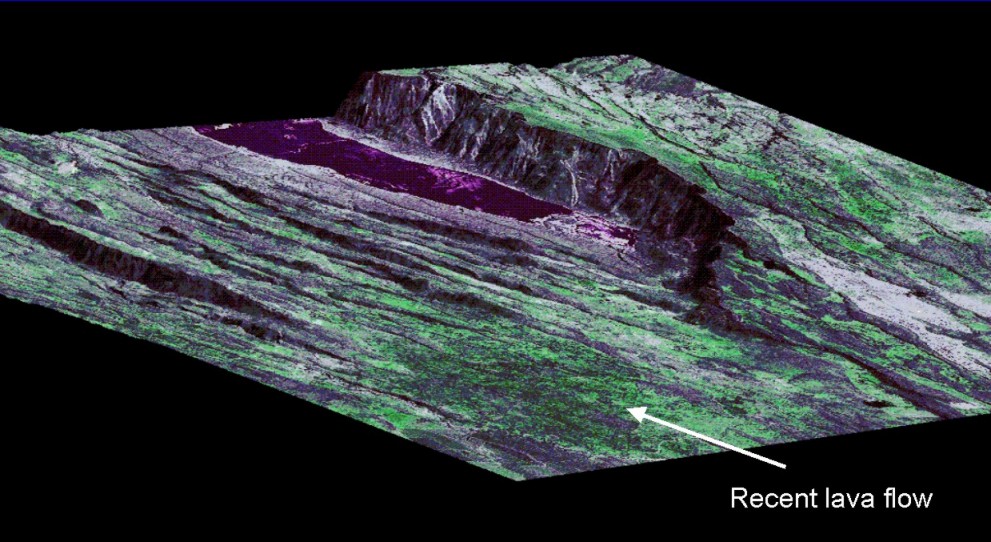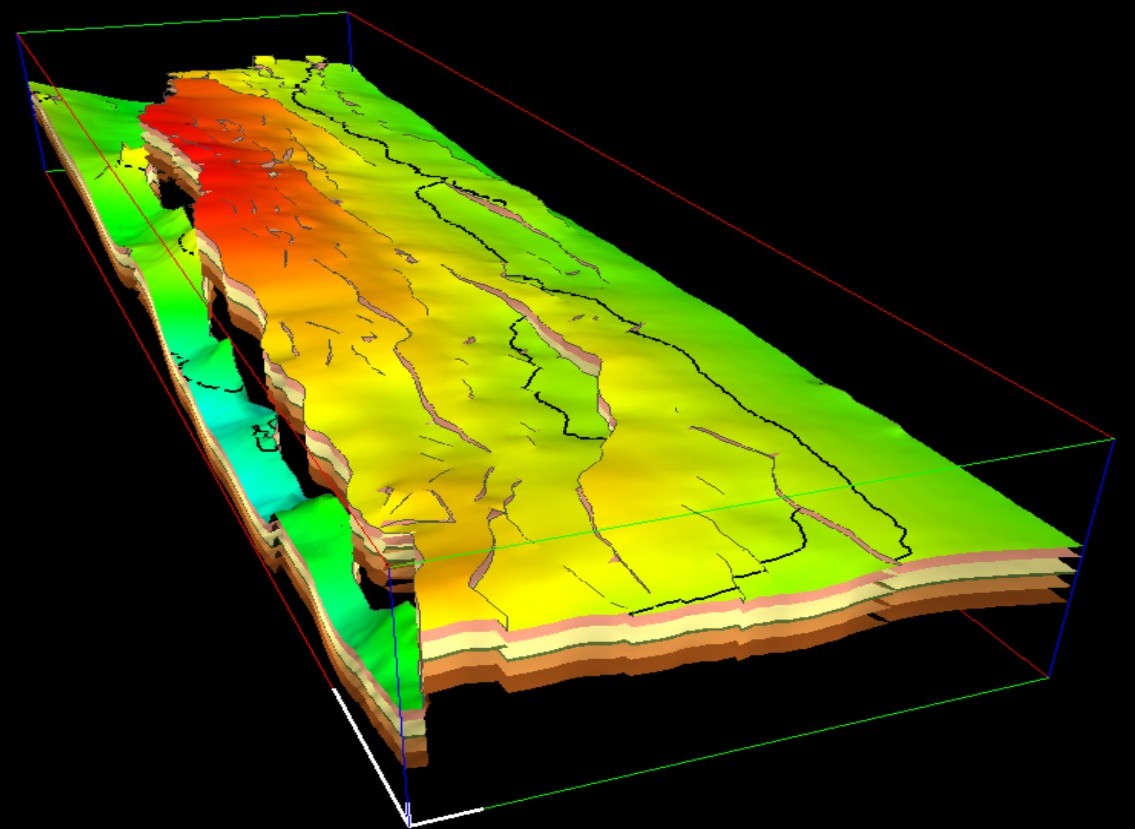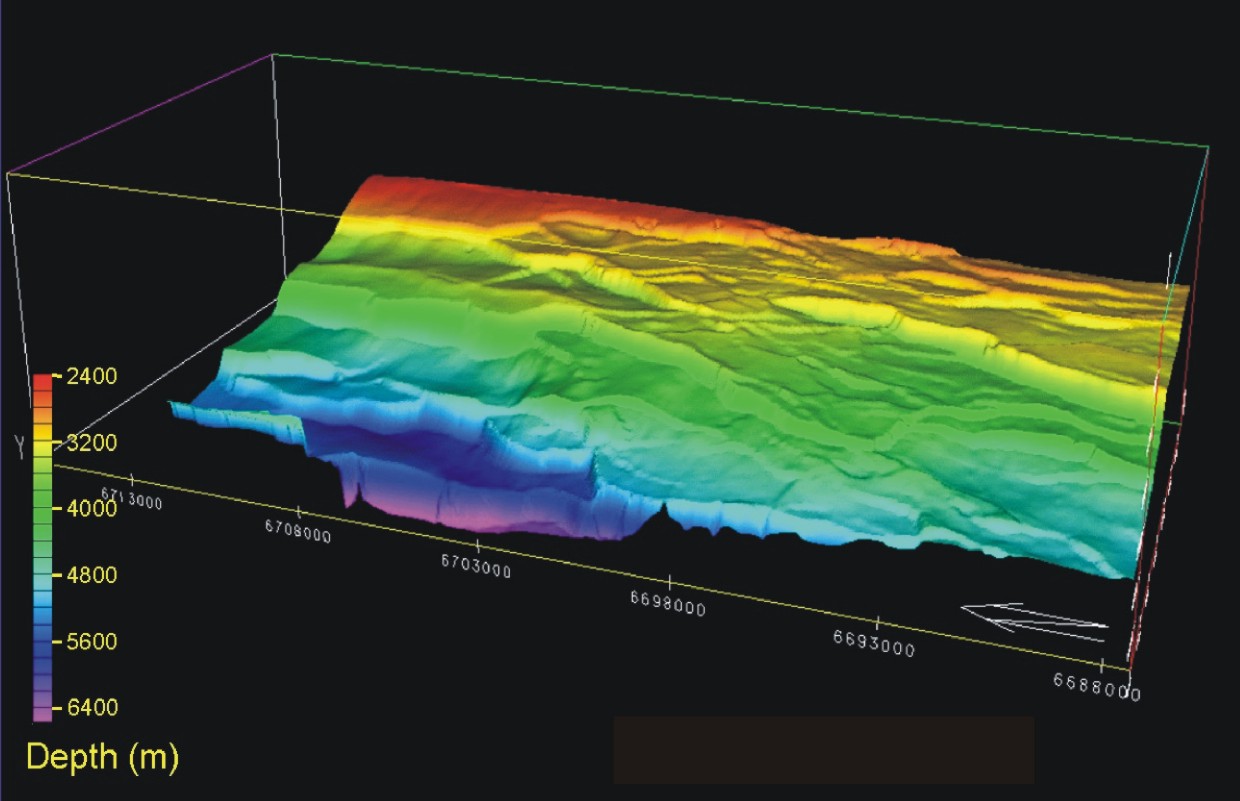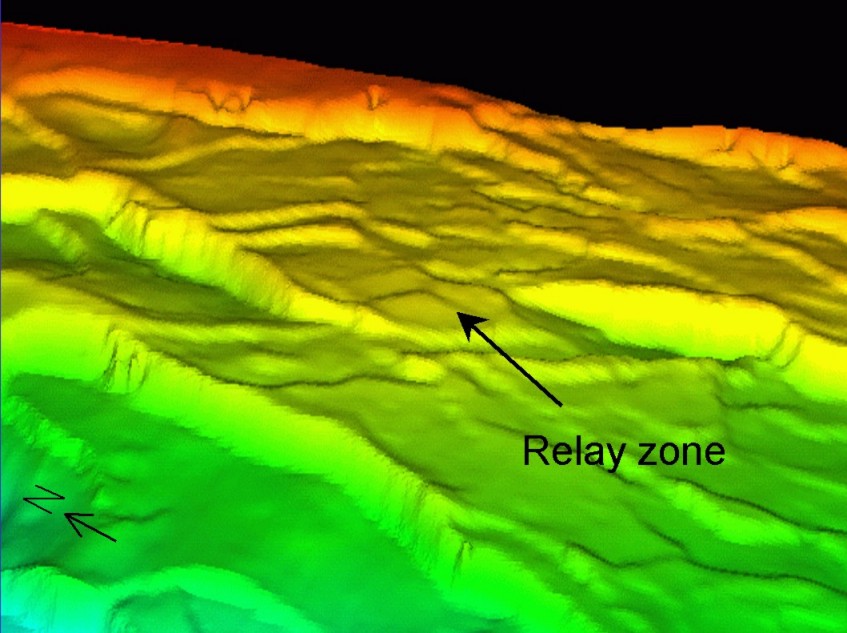

Normal fault from Iceland, showing the lateral decrease in displacement towards the fault tip. The steep fault dip at surface is typical of Icelandic faults (and consistent with theory e.g. Walsh & Watterson 1988), and when combined with progressively shallower dips at depth is responsible for the generation of a opening at surface, as well as vertical displacement.

Areal view of the East African Rift Valley, Lake Bogoria, Kenya. The area is 30kmx30km and contains numerous faults on the downthrown side of a large bounding fault with a maximum displacement of ca 1km.

Structure of a North Sea oilfield derived from 3-D seismic data. Deformation associated with a ca 400m fault, dipping to the left, generates an uplifted footwall which combines with the fault surface to form a typical fault trap. The reservoir contains numerous internal faults, many of which are laterally discontinuous.

Structure of a middle Jurassic horizon for the central part of a ca 25kmx10km area on eastern margin of the Northern North Sea. The structure highlights the discontinuous nature of faults and the complex displacement transfer patterns associated with them. Despite these complexities the aggregate displacement of faults measured along extension-parallel lines is approximately constant along the basin length (the fault system displays geometric coherence; Walsh and Watterson 1991).

Structure of a middle Jurassic horizon, from the area shown above, showing a relay zone between two fault segments, each with ca 500m vertical displacement. The length of the area measured along these segments is ca 8km.